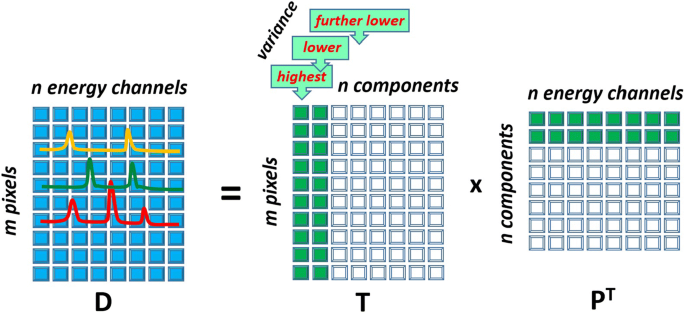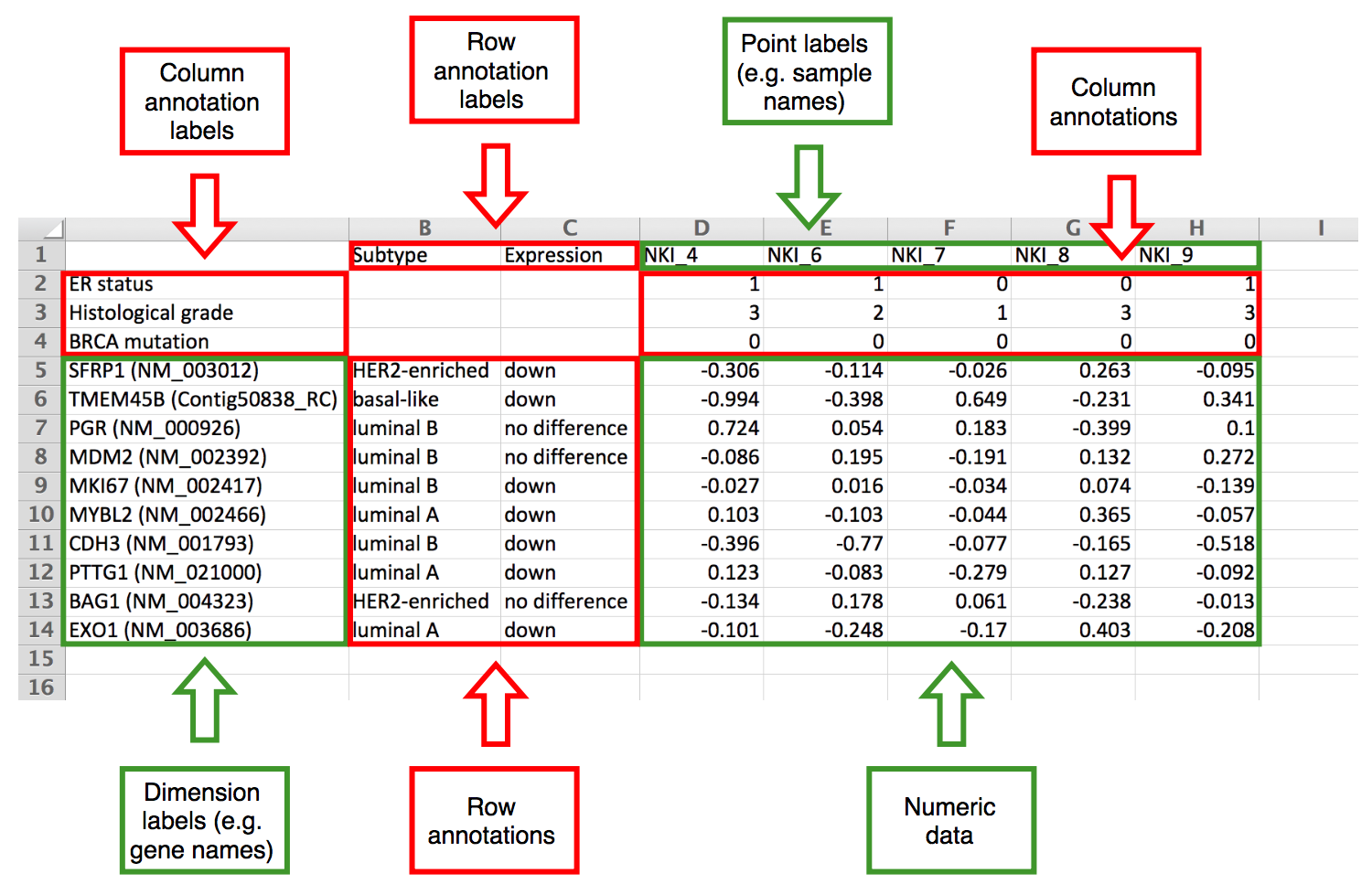

More info about ggbiplot can be obtained by the usual ?ggbiplot. It colors each point according to the flowers’ species and draws a Normal contour line with ellipse.prob probability (default to ) for each group. Other PCs can be chosen through the argument choices of the function. It projects the data on the first two PCs. G <- g + theme(legend.direction = 'horizontal',

G <- ggbiplot(ir.pca, obs.scale = 1, var.scale = 1,
#PCA DATA IFORMAT IN R CODE#
The code to generate this Figure is given by The Figure below is a biplot generated by the function ggbiplot of the ggbiplot package available on github. We can use the predict function if we observe new data and want to predict their PCs values. We can see there that the first two PCs accounts for more than of the variance of the data. The second row shows the proportion of the variance in the data explained by each component while the third row describe the cumulative proportion of explained variance. The first row describe again the standard deviation associated with each PC.

The summary method describe the importance of the PCs. In this simple case with only 4 PCs this is not a hard task and we can see that the first two PCs explain most of the variability in the data. The Figure below is useful to decide how many PCs to retain for further analysis. The plot method returns a plot of the variances (y-axis) associated with the PCs (x-axis). The print method returns the standard deviation of each of the four PCs, and their rotation (or loadings), which are the coefficients of the linear combinations of the continuous variables. The prcomp function returns an object of class prcomp, which have some methods available.
#PCA DATA IFORMAT IN R HOW TO#
See at the end of this post how to perform all those transformations and then apply PCA with only one call to the preProcess function of the caret package. In the example above, we applied a log transformation to the variables but we could have been more general and applied a Box and Cox transformation. Since skewness and the magnitude of the variables influence the resulting PCs, it is good practice to apply skewness transformation, center and scale the variables prior to the application of PCA. equal to TRUE in the call to prcomp to standardize the variables prior to the application of PCA: Notice that in the following code we apply a log transformation to the continuous variables as suggested by and set center and scale. We will apply PCA to the four continuous variables and use the categorical variable to visualize the PCs later. Sepal.Length Sepal.Width Petal.Length Petal.Width Species The data contain four continuous variables which corresponds to physical measures of flowers and a categorical variable describing the flowers’ species.

I will use the classical iris dataset for the demonstration. Please, let me know if you have better ways to visualize PCA in R. However, my favorite visualization function for PCA is ggbiplot, which is implemented by Vince Q. I will also show how to visualize PCA in R using Base R graphics. In this post I will use the function prcomp from the stats package. There are many packages and functions that can apply PCA in R. If the genetic data is in PLINK format, users can use PLINK to recode the SNP as 0, 1, 2.Following my introduction to PCA, I will demonstrate how to apply and visualize PCA in R. Each cell represents the SNP value coded as 0,1,2 according to the number of minor allele in each locus. Row represents the SNP ID and the column represents the sample id. Sample input file (Click) Genetic data file (.csv)Ĭontains SNP values coded as 0,1,2 (number of minor allele).Ĭontains two columns: (1) gene name and (2) SNP id.Ĭontains two columns: (1) pathway name and (2) gene name.Ĭontains (1) phenotype and (2) covariates. The following table shows the summary of four files.
#PCA DATA IFORMAT IN R DOWNLOAD ZIP#
It also need WISARD program which can be download from To run the HisCoM-PCA, you should first download the Download zip file which contains ‘HisCoM-PCA.R’ and sample data.įour input files are required to run HisCoM-PCA. HisCoM-PCA is written by R and can be installed by the following steps.


 0 kommentar(er)
0 kommentar(er)
